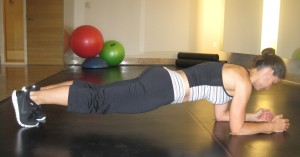Postnatal Exercises
Exercise is recommended to keep the body strong and in proper working order. Exercise also builds and maintains healthy joints, bones and muscles. Postnatal exercises help a woman get back into shape after giving birth, and they also help combat postpartum depression. There are several basic exercises you can do within a few weeks after giving birth. However, if you’ve had a Caesarean section, you may want to wait at least six weeks before doing any abdominal exercises. If you experience pain while exercising, stop immediately and call your doctor for advice.
 Walking
Walking
Walking is the most basic of exercises, and it’s a good way to begin a new workout regime. Begin by walking at a leisurely pace, and increase your pace and distance over time. Once you’re comfortable in your movements, take advantage of all those great baby registry gifts you’ve received. Put the baby in the baby carrier and push the child in front of you as you walk.
Some women enjoy walking with a friend, as it gives them time to socialize, an activity you may be neglecting while caring for your new baby. If you are a runner, avoid an intense running workout until you have spoken with your physician. Some women are discouraged from exercising strenuously in the first few weeks after giving birth, especially if they are waiting for the wound from a C-section to heal. A doctor can answer questions about your limitations.
Pelvic Tilt Exercise
The tummy is a major problem area for many women after giving birth. Thus, pelvic exercises are often helpful. The pelvic tilt exercise is easy to do and can tighten up your stomach and strengthen your back. Begin on your back on the floor with your knees bent and your feet flat against the floor. Then, flatten your back against the floor as you tighten your abs and lift your pelvis slightly off the floor. Hold this position for 10 seconds. Repeat the exercise by doing three sets of ten seconds each. Pelvic tilt exercises can be done anywhere. After you’ve finished breastfeeding and put the baby down for a nap, take a few minutes to do your exercises.
Kegel Exercises
Some people worry about finding the time to exercise. However, both pelvic tilts and Kegels can be done in a short time frame. The purpose of Kegel exercises is to strengthen the muscles in your pelvic floor. During pregnancy, the muscles of a woman’s pelvis are often weakened. This is why some women experience incontinence after childbirth. If you notice that coughing, sneezing or laughing causes you to leak small amounts of urine, then you could probably benefit from Kegel exercises.
Kegels are simple. First you must identify your pelvic floor muscles. These muscles are the ones you use when you stop yourself from urinating mid-stream. Practice stopping and starting urination while in the bathroom, but only do this once or twice to identify the proper muscles. Do not make a regular habit of contracting your muscles during urination, as this can cause bladder problems.
Once you’ve identified your pelvic floor muscles, you are prepared to do Kegels. Lie on your back and contract your muscles for five seconds, and then relax for five seconds. Do this until you can contract for ten seconds at a time. Do three sets of ten seconds 2-3 times each day. You can even do Kegels while standing up and walking around. Kegels can help those who leak a small amount of urine but probably won’t be helpful to women with a serious incontinence problem.
Forearm Planks
 Planks are good exercises that target and tone your abs, thighs and butt. Planks are also a great way to strengthen your abs without straining your back and neck. Begin by lying on your stomach on the floor. Put your forearms on the floor beneath your shoulders and keep your back straight with your legs extended so that your toes touch the floor.
Planks are good exercises that target and tone your abs, thighs and butt. Planks are also a great way to strengthen your abs without straining your back and neck. Begin by lying on your stomach on the floor. Put your forearms on the floor beneath your shoulders and keep your back straight with your legs extended so that your toes touch the floor.
Then, lift your tummy from the floor so that it is parallel to the floor. Using your forearms and toes to hold your body weight, tighten your tummy and hold your abs off the floor for 30-60 seconds. Rest for 30 seconds, and then repeat the exercise 4-5 times. You can also do planks with your palms flat against the floor and your arms straight rather than placing your weight on your forearms.
Finding time to exercise after giving birth can be a challenge. Try to schedule a brisk walk several times weekly at a local park, or simply walk around your neighborhood. Any exercise is better than none at all. Kegels, pelvic tilts and planks can be done inside your home. Take a few minutes several times a day while your baby sleeps to do your exercises. It’s also a good idea to have your doctor recommend stretches and workout routines. Remember to start light, then increase your exercise intensity over time.
I’m the woman next door, with all of the problems and joys of everyday life. I know that the more I give, the more I’ll receive–so my blog is intended to help people, and hopefully, it will do good things for me too. As a working mother, I’m often faced with many practical, everyday situations that make life harder, but that shouldn’t be the case. Visit my website at thebabbleout.com
Sources
http://www.mayoclinic.org/healthy-lifestyle/womens-health/in-depth/kegel-exercises/art-20045283
http://www.webmd.com/parenting/baby/6-exercises-for-new-moms#2
http://kemh.health.wa.gov.au/brochures/consumers/postnatal_exercise.pdf

